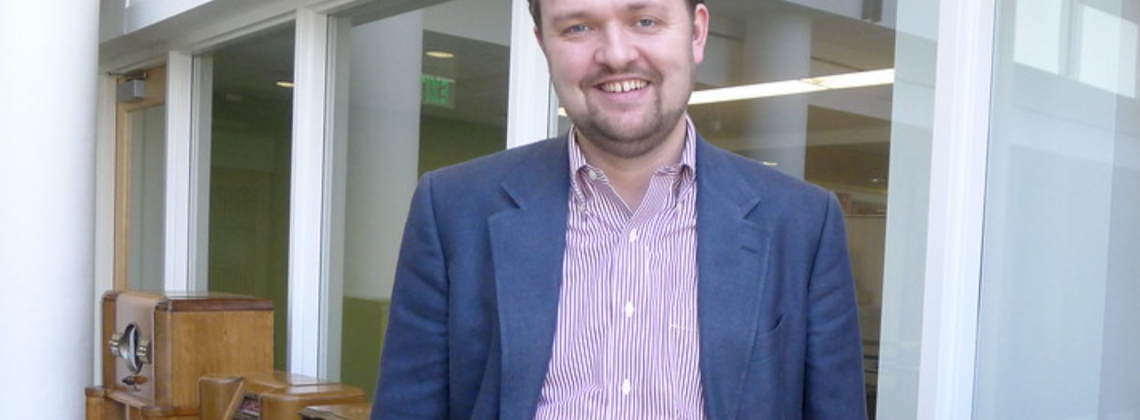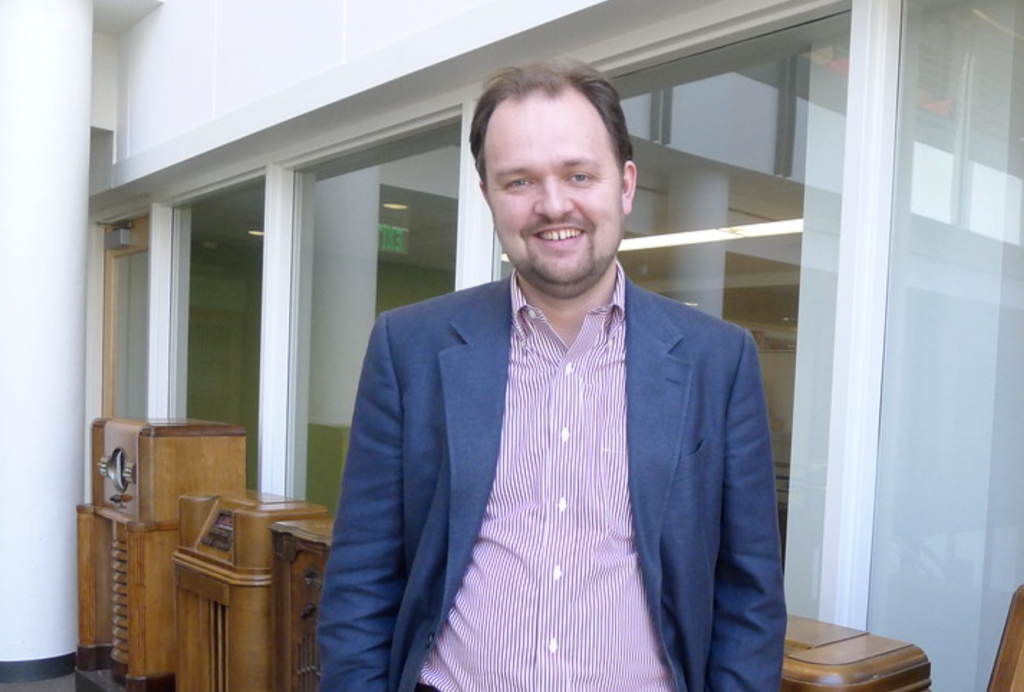

More institutional suspicion is not what American Catholics need
The sixtieth anniversary of the opening of the Second Vatican Council (1962-1965) has occasioned reflection by many leading Catholic pundits. Among these, columnist Ross Douthat may be the most notable, if not for the depth of his theological insights then for the heights from which he expresses them. As a columnist for the New York Times, Douthat has been uniquely positioned to communicate the broader public significance of Catholic issues that in the hands of a different writer might appear merely private or parochial.
Douthat joined the Times in 2009, ostensibly broadening their editorial range by providing an additional “conservative” voice. Unlike the hard-boiled neo-conservativism of Bret Stephens or the squishy humanism of David Brooks, Douthat injected a distinctly Catholic brand of conservativism into the Times mix, particularly with his consistent support for pro-life issues. In this respect Douthat broke the mold of the typical Times Catholic columnist: a liberal, cradle Catholic only tenuously connected to the Church but happy to attack its “authoritarianism” with the zeal of a nineteenth-century nativist.
Alas, with the elevation of Francis to the papacy in 2013 Douthat joined the ranks of public critics of the Church, though from a conservative perspective. His 2018 book To Change the Church: Pope Francis and the Future of Catholicism gave voice to conservative Catholic concerns that Francis was returning the Church to the type of liberalism that held sway in the decade following the close of Vatican II, thus sweeping away the conservative reorientation promoted by Popes John Paul II and Benedict XVI. And like many conservatives under Francis, Douthat seems to have moved from finding fault with the interpretation of the Council documents to finding fault with the Council itself. Douthat’s recent reflections on this dilemma come with titles such as “How Catholics Became Prisoners of Vatican II” and “How Vatican II Failed Catholics—and Catholicism.”
The “failure” Douthat identifies reflects a narrative common enough in conservative Catholic circles. The narrative goes something like this: Prior to the Council, the Church served as a unified bulwark against the errors of modernity. In an effort ostensibly to communicate the Gospel to a world alienated by the medieval ideas and institutions that continued to prevail within the Church, the Council abandoned orthodoxy and tradition, remaking the Church in the image of secular modernity.
At the level of sociology there is certainly much truth to this narrative, particularly if one focuses on Catholic institutions of higher learning. To his credit, Douthat does not take pot shots at liberal Catholic academics. For a representative symptom of Catholic disarray he cites a chance “conversation with a friendly older gentleman, an Irish American of the Baby Boom generation.” Making Catholic small talk, Douthat shared the difficulties of getting the family together to go to Church, noting in passing the obligatory nature of Sunday Mass attendance. The man responded with “a friendly sort of mystification. “Oh,” he said, “but you know the church got rid of that after Vatican II?” While Douthat concedes that Vatican II did not in fact remove the Sunday Mass obligation, he sees his “friendly interlocutor’s” misperception less as sign of the failure of the Council to communicate its message than of the success of the Council’s shift away from the language of obedience and obligation in order to foster a more authentic, internal faith appropriate to the modern world. For Douthat, this transformation toward a more internal faith simply never occurred. Catholics abandoned obligation and then abandoned the Church itself.
I take issue not with Douthat’s description but rather his explanation. While he seems to want to blame this breakdown on the Council itself, much of his own evidence points to another culprit. He accuses the Church of failing to “establish the importance of its own rituals and obligations,” yet concedes that “the church is in competition with a million other urgent-seeming things . . . More American Catholics skip Mass because of the demands of youth sports, the felt need for a more relaxed ‘family time’ or the competing pulls of work and entertainment than because of any theological or moral issue.” True, the Church may be judged a loser in the free market of social and cultural affiliation. But can one look at the institutional power of the education and media establishment and call this fair competition? Why blame Vatican II for what historians go so far as to call the “cultural hegemony” of middle-class, consumer capitalism?
Over the twelves centuries from Nicea to Trent ecumenical councils implemented their teachings in the context of various forms of Church establishment. The Church was in a position of public institutional power with a tremendous degree of control—indeed, a near monopoly—on education and culture. Trent failed to draw Protestant kingdoms back to the Church but retained a high degree of power in areas of education and culture in the kingdoms that remained Catholic. That is, the Church maintained its “cultural hegemony.” It lost this in the modern era. At Vatican II the Church spoke from a position of unprecedented powerlessness. No longer able or willing to assert its will by force, it appealed to the world, to “people of good will,” through persuasion.
In the modern West, coercion remains the prerogative of the state: Church attendance may be voluntary but school attendance is compulsory. No doubt, the documents of Vatican II may be judged somewhat naïve in their understanding of the power dynamics of the modern West. The humanism that emerged from the common experiences of the Great Depression and the Second World War appeared to offer a fruitful common ground for evangelization, but that humanism was fading just as the Council came to a close. Catholics cannot retreat from the Council’s call to bring Christ to the world. But they do need to have a clearer sense of the nature of that world.
This clear sense requires more just than an awareness of the obvious dangers that have arisen in our post-humanistic culture. The point is not always that the world is “evil” but rather that it offers so many seductive lesser “goods.”
Here Douthat seems to give culture the benefit of the doubt. For him, culture poses challenges, but these are not insurmountable. The Church may have traded “stringent rules” for “a more, well, American sort of flexibility,” but America is not the problem. No, for him the problem is Vatican II, which is all “crisis and decline,” akin to “the Soviet empire in its dotage.”
In sum: Douthat is quick to blame the Council. But the real culprit may just be youth sports and family time.
In all this there is more than a little irony. Catholics believe that the Church is the Vicar of Christ on earth and that the Holy Spirit speaks through the Church, most especially in ecumenical councils such as Vatican II. I am more than willing to concede that Catholics may not be hearing what the Holy Spirit is trying to say, but I cannot blame the Holy Spirit for not speaking more clearly. Conservatives are right about Sunday Mass attendance. But do they think they will somehow convince wayward Catholics to fulfill basic obligations by persuading them to reject the authority of Vatican II?
Christopher Shannon is associate professor of history at Christendom College in Front Royal, Virginia. He is the author of several works on U.S. cultural history and American Catholic history, including American Pilgrimage: A Historical Journey Through Catholic Life in a New World (2022), available now from Ignatius Press.
In a detective novel i am reading, I read this morning about the problem of murder for a Catholic. A sudden death provides no time for absolution. The author relates that Dante had a place for these people in his Inferno. This had to be because of Catholic dogma. What kind of god does such things? The dogma of the past can be wrong. Can we, or can we not, accept the notion that the evolution of religious beliefs and practices can be good (though not necessarily so).
Well, Ron, I am not quite sure what your novelist is referring to. My closest guess is the teaching on “limbo,” a place medieval theologians proposed to take care of the problem of infants who died unbaptized yet not guilty of any particular sins. I am not sure of the dogmatic standing of that teaching in Dante’s time, and it is not something much talked about these days among Catholic theologians. The Church acknowledges change in teachings, though the proper term might be development rather than evolution. For example, the doctrines concerning the divinity and humanity of Jesus, doctines shared by most Christians, Protestant and Catholic, were not formulated until the 4th and 5th centuries. Did the teaching change from the time of the Apostles or did it just develop, the way an acorn becomes an oak tree. Skeptics say change, the Church says develop.
The big problem with Vatican II and the issue of change is that the Church did not make any old-style doctrinal proclamations at Vatican II. The purpose of the Council was not to address some doctrinal crisis, but rather the challenge of modernity. The point was not to clarify doctrine, but to put forth a vision of how Catholics could live faithfully and spread the Gospel in a modern world that had wiped away most of the social and intellectual structures that had guided the Church from Late Antiquity to the Early Modern period. The problems Douthat identifies, which are real, to me reflect the persistance of a pre-Vatican II Catholic tendency to see the faith primarily in terms of doctrine. So, when the Church started using a language of change, most Catholics reflexively assumed they were talking about change in doctrine. The Church still tends to see doctrines, once formulated (oak tree stage) as unchanging, but recognizes the need to change how we live those teachings in response to the social, poliical, and cultural changes that will be a part of our life on earth until Jesus comes again.
I hope this helps.
I am far from a mathematician, but I did teach a little 5th grade math for a year – it is the 60th anniversary, not the 40th? If I am wrong I am no younger than I previously thought. Enjoyed the article and as a former Evangelical, now Catholic – therefore new to this world – I do get tired of the Vatican II haters.
Ughh! Guilty as charged. Thanks for the correction. I was never that great at math, but this is a true senior moment. I was born the year the Council opened. Maybe it was a subliminal way of shaving years off my age.
Note to Readers: the error noted above was real, the correction has been made.